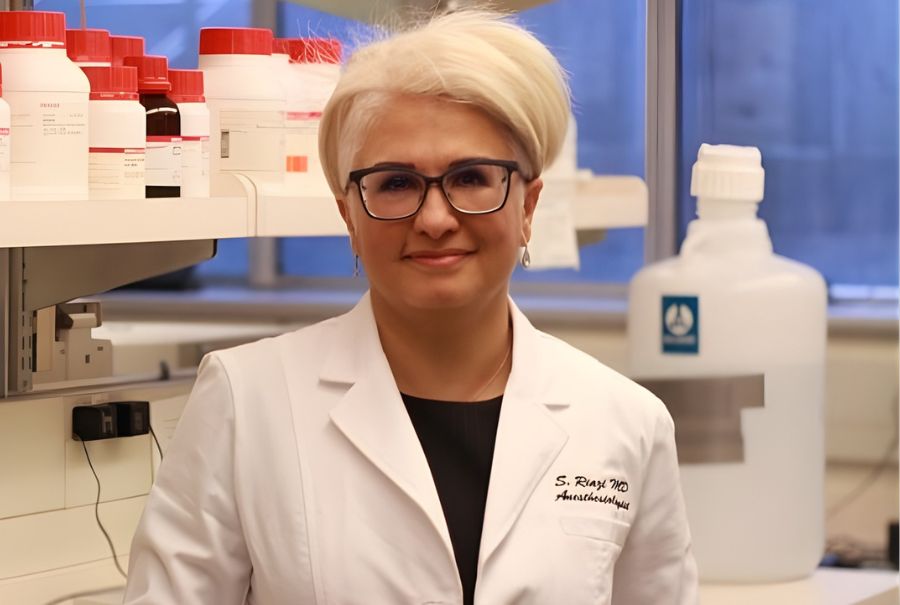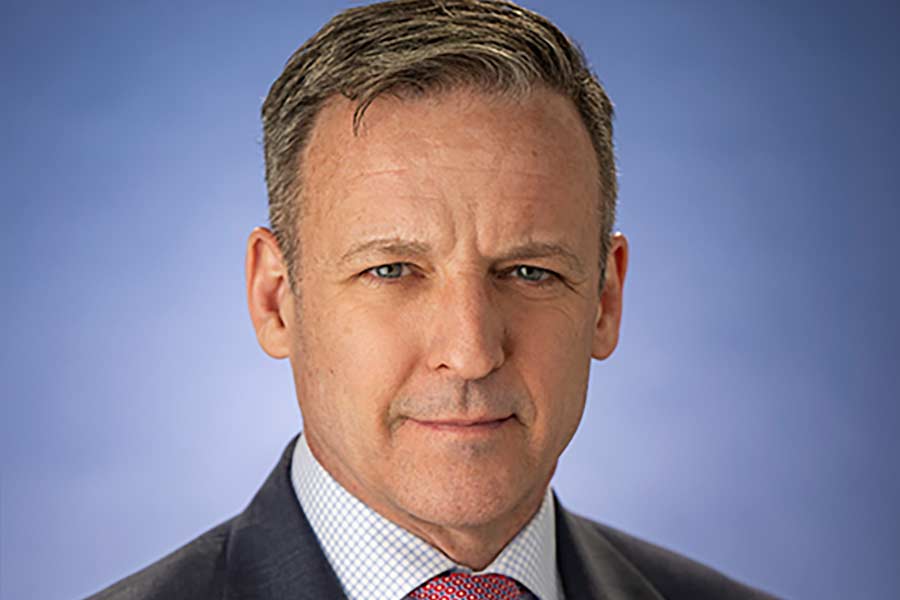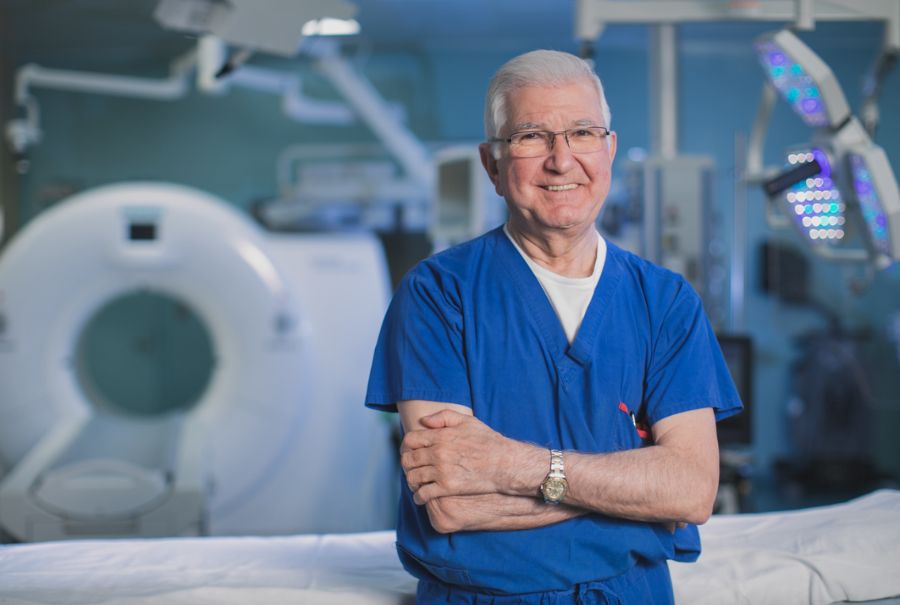
Registered nurses Rhoda Gacusana (L) of Unit 8B at Toronto Western Hospital and Steven Dalglish of 6 Eaton at Toronto General Hospital admit to apprehension but say their teams are ready. (Photos: Courtesy Rhoda Gacusana and Steven Dalglish).
They’re open to acknowledging their fears – of patients getting very sick, very quickly; of scenarios similar to places such as New York City and Italy; of getting infected or taking it home to their family.
But staff on UHN’s first two units designated to care for COVID-19 patients – 6 Eaton at Toronto General Hospital and 8B at Toronto Western Hospital – say they are confident of the equipment, procedures, medical expertise and support they have in place as they brace for what’s expected.
“I definitely feel ready and confident in our team, our assessments and our medical abilities,” says Steven Dalglish, a registered nurse (RN) on 6 Eaton, a unit which was created about 18 months ago when he joined UHN. “That said, we don’t really know what it’s going to turn out to be.
“I’m sure we’ll handle it the best we can. We have amazing teamwork and excellent cooperation.”
For several weeks, patients with COVID-19 have been treated at UHN – in the Emergency Departments (ED), on inpatient units and in Intensive Care (ICU). But with a surge of cases expected, as has happened in so many other jurisdictions in this global pandemic, a longer-term plan is required.
UHN’s plan for an influx of COVID-19 patients is a phased approach, with 6 Eaton and 8B – both General Internal Medicine (GIM) inpatient units – becoming the first designated to care exclusively for those diagnosed positive or under investigation for having the coronavirus. Procedures put in place and lessons learned there, will inform care practices on other units and at other sites, which will be called upon to join in subsequent phases of the plan, based on volumes and rates of new patients.
“Many others have had a part to play in supporting these patients in their areas also,” says Sandra Grgas, UHN’s Clinical Director of ED/GIM, who is overseeing this first phase of the COVID-19 inpatient strategy. “Our ability to plan in advance, and care for many more patients in a cohort model now will go a long way to develop safer practices for teams when we surge across several units.”
Every patient is isolated on these units
It’s been less than two weeks, but already the care teams on both units have grown increasingly knowledgeable and comfortable in key areas: caring for this particular type of patient, new procedures for donning and doffing personal protective equipment (PPE), sharing information and experiences with each other across sites on what works well and what in the original plan needs to be adjusted.
“It’s important for us as leaders to support these teams and give them an opportunity to provide feedback and be responsive to the changes they’re suggesting based on their experience,” Sandra says. “They are the leaders now in developing the model of care because they’re our frontline clinicians who are best at understanding how we can do this well.”
Staff on GIM units care for patients with a broad range of diseases and complex needs. Sometimes, that includes patients who are in isolation. But now, whether the person is positive for COVID-19 or a suspect case, each patient is isolated.
That means each visit to a patient’s room requires the crucially important but time-consuming process of donning and doffing PPE, complete with a mask and face shield. As a result, nurses try to group care for individual patients to limit trips into a room, so simple things, such as delivering a glass of water, become complex and require a team approach to ensure all safety procedures are followed.
“It’s a completely different way that we’re looking after our patients – from our care philosophy to the care we actually provide,” says Janet Pilgrim, Nurse Manager on 8B. “We’re learning every day.”
And sharing. In addition to a regular safety huddle, there are daily phone calls between the two units to discuss best practices and problem solve. There’s been a focus on inter-disciplinary education and refining various safety procedures. Nurses also group chat to stay up to date outside work hours. The Nurse Managers are on the floor even more than usual to talk with the team and hear concerns.
“There’s an understanding we’re all in this together,” Janet says. “Everyone is supporting each other.
“There’s great teamwork within our staff and the inter-disciplinary teams. And everyone is showing kindness and compassion and courage with each other and especially with our patients.”
‘When, or if, things get worse, we will be able to tackle it’
Experience elsewhere in the world has shown that the virus is much more contagious than the flu and the condition of COVID-19 patients can deteriorate very quickly. That means there can be a high rate of turnover on inpatient units as those who are suspect cases test negative and are moved out, and those with it may get sicker and be sent to the ICU.
“There is a much faster turnover of patients than we’re used to,” says Rhoda Gacusana, an RN who has spent all of her nearly 14 years working at UHN on 8B. “That’s very draining for everyone, not just nursing but housekeeping and everyone else on the unit.
“But we have good support, which is great help for everybody.”
Both Steven and Rhoda say in addition to the confidence they have in their team, there’s also comfort in the responsiveness UHN management has shown to staff concerns about a surge in patients by putting in place rules that enable qualified staff from elsewhere in the hospital to lend a hand.
“That reassures me that when, or if, things get worse, we will be able to tackle it,” Steven says.
Sannie Lai, Nurse Manager on 6 Eaton, says “the uncertainty and the unknown” of what to expect from the next few weeks heightens the apprehension of the staff, as does social media featuring stories and scenes of COVID-19 care teams being overwhelmed elsewhere in the world.
But in addition to the procedural supports that have been put in place, there has been an increased focus on physical and mental wellness. The importance of proper hydration and taking breaks is stressed to staff who are frequently wearing PPE, which can be very warm.
There’s also been a focus on BRITE practices (a UHN-wide initiative to help staff members develop resilience in their day-to-day work) and a healthy willingness on the part of team members to openly talk about their concerns and needs, as well as a readiness to offer and reach out to support each other, Sannie says.
“It’s been fatiguing – mentally and physically – as they’re trying to prepare for a wave of more patients,” Sannie says when asked if staff on the units are getting used to their new assignment. “But we’ve moved from that initial apprehension, to a belief that we’re ready, we’ve got this.
“There’s a feeling that we’re going to do this as a team.”
To donate to the UHN emergency COVID-19 fund, click here.


